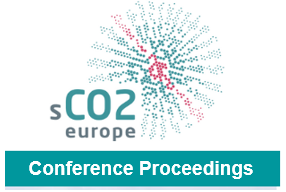Analysis of sCO2 Cycles for District Heating Applications
Supercritical CO2 (sCO2) power cycles provide the possibility to significantly improve power generation from fossil fuels and renewable sources considering thermodynamic efficiency, economic feasibility, and operational flexibility. In addition to standalone power generation, the application of sCO2 cycles to cogeneration for combined heat and power processes can be a highly
attractive option with respect to further development, and commercialization.
In particular, the incorporation of a heat extraction option for district heating can be favorable regarding the overall cycle efficiency for temperate and cold climate regions because of the thermodynamic properties of sCO2. The current study thus
focuses on the modeling, simulation, and thermodynamic analysis of different, simple sCO2 cycle designs for waste heat applications incorporating heat extraction for district heating. Different technological options, like backpressure turbines, split-flow recooling, as well as turbine extraction designs, and their effects on cycle design, operation, and efficiency are analyzed. The results show
that sCO2 based cycles enable engineers to achieve high-efficiency power generation also in combination with heat extraction for district heating, comparable to conventional water-steam-based cycles. Furthermore, the split-flow recooling design provides the possibility to extract a significant amount of heat without affecting the power generation.
Vorschau

Zitieren
Rechte
Nutzung und Vervielfältigung:
Dieses Werk kann unter einer Creative Commons Namensnennung 4.0 Lizenz (CC BY 4.0)
Creative Commons Namensnennung 4.0 Lizenz (CC BY 4.0)
genutzt werden.
